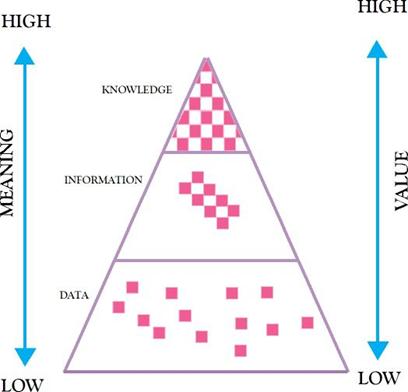Knowledge is What We Buy, Sell and Do (Part 1)
Introduction
‘Knowledge is not the solution, but in the near future, the intellectual capital will be required to deal with the complexity and to support innovation and creativity’ (Brooking,1996:in Carneiro, Journal of KM, 2000).
The term of “Knowledge Worker” becomes popular from time to time. Nowadays company compete the availability of knowledge worker as their asset between each others. They knew that money won’t buy anything, but knowledge would bring them to an excellent achievement and high quality improvement. Knowledge Management exists in order to manage the Knowledge Worker and the knowledge itself. In this paper, I would like to explain about how the power of knowledge in the context of business would makes innovations growth, builds strong competitiveness, locks the customer, and affect the profitability.
Knowledge
Knowledge
‘Knowledge, by contrast, is defined as the meaningful links people make in their minds between information and its application in action in a specific setting’ (Dixon, 2000:13).
‘Knowledge derives from minds at work’ (Davenport and Prusak, 1998:5).
‘Knowledge is an understanding gained through experience or study’ (Awad and Ghaziri,2001:33).
Nonaka and Takeuchi suggest that “knowledge, unlike information, is about beliefs and commitment” (Nonaka and Takeuchi 1995: in Awad and Ghaziri, 2001).
There are many definitions of knowledge from many knowledge experts that we can summarize them in a short sentence.’ Knowledge is about know-how and know-why’ (Gurteen, Journal of KM vol.2, 1998). David Gurteen used a cake to describe his definition. Let me explain his simple theory. First, we start by choosing any ingredients that will make a cake, for example “flour”. Flour is a constituent part of cake. We can say flour is a data because we may not even be able to tell it was a cake and it’s not very useful. But, if we combine its molecular constituents into a list of ingredients it’ll become information. The recipe that contains a list of ingredients (information) and the instructions is become a knowledge. Why? Because, it tells you “How-To” makes a cake, and it put into a proper format as an explicit knowledge, even though we will need some tips as a tacit knowledge from the expert to make the perfect cake.
In order to develop a clear objective on our understanding of Knowledge, we can analyze the diagram below.
Fig.1 Data, Information, Knowledge (Burton-Jones, 1999:6)
We knew from the Triangle, that Knowledge’s part had the smallest portions but contained an excellent arrangement of the rectangles. And both arrows refer to high value and meaning. Other wise, the data’s part had the biggest portions but contained a discreet arrangement of the rectangles and the arrows refer to the lower meaning and value, while the information took the middle’s part. If we combine with the “Cake”, we can make assumption that the recipe has the proper format (perfect rectangle’s arrangements) which we called it explicit knowledge. It revealed many values and meaning that made us knew how to make a cake. We looked flour as a data. Why? Because flour doesn’t tell us anything about how to make a cake and also it doesn’t mentions the measurement. That’s why the rectangle’s arrangement above shows a discreet structure.
Knowledge Sharing
It is very important to know how to encourage people to share what they know. Lesser and Prusak suggest that the magic ingredient that links strong ties and knowledge sharing is Trust (Lesser and Prusak, 2004:37). Without trust, people won’t share. Why is very important for an organization or company to generate the knowledge sharing? Because, the transferring of knowledge happen in the knowledge sharing and the most important type of knowledge that is being shared is Tacit Knowledge. Tacit knowledge is knowledge that takes place in the head of the people, so the effective way to transfer it; it’s through the Knowledge Sharing by face to face meeting.


